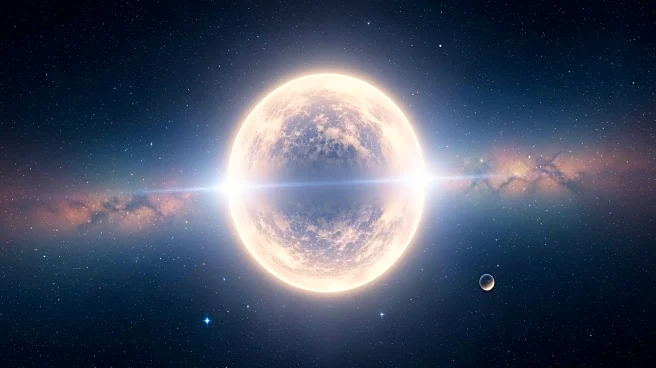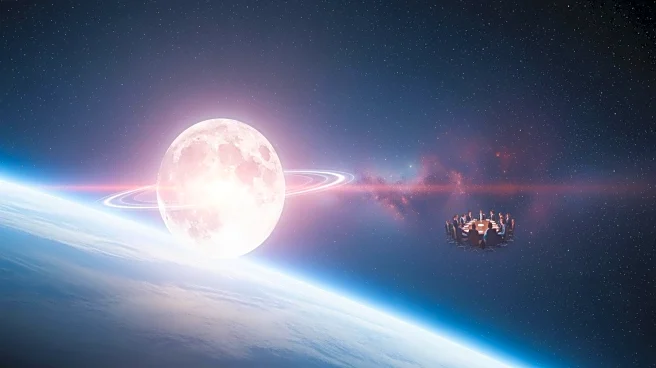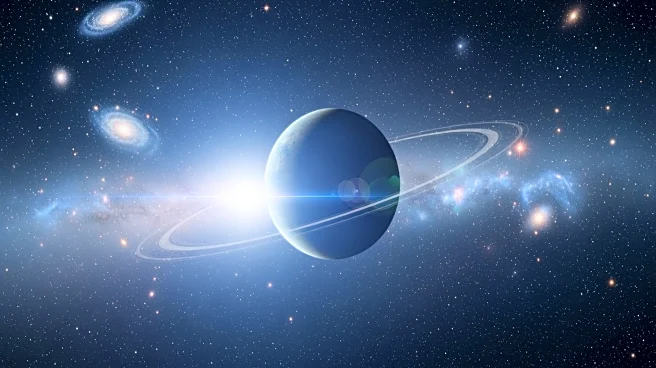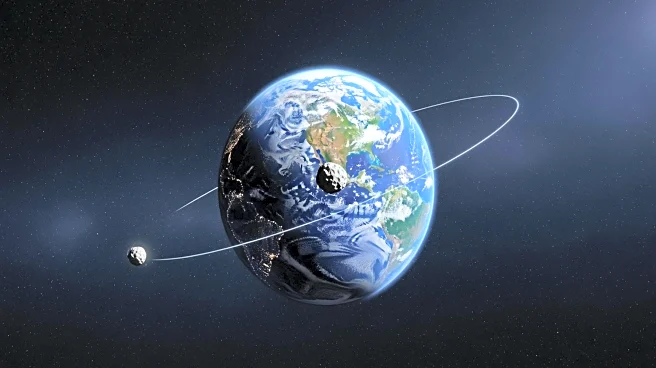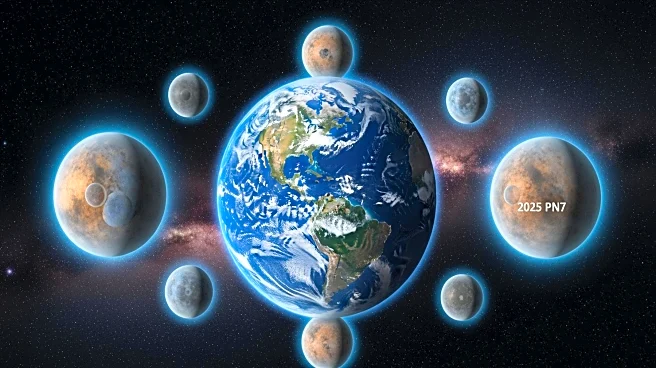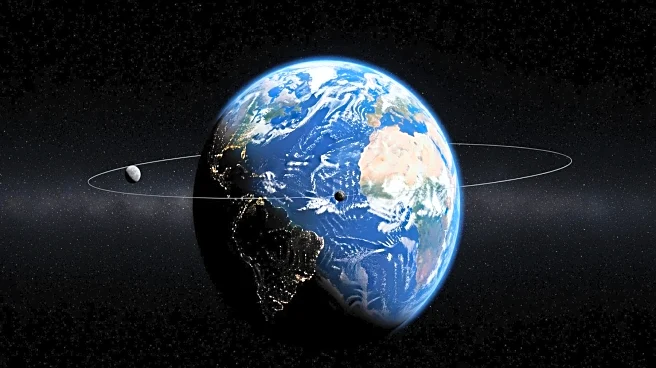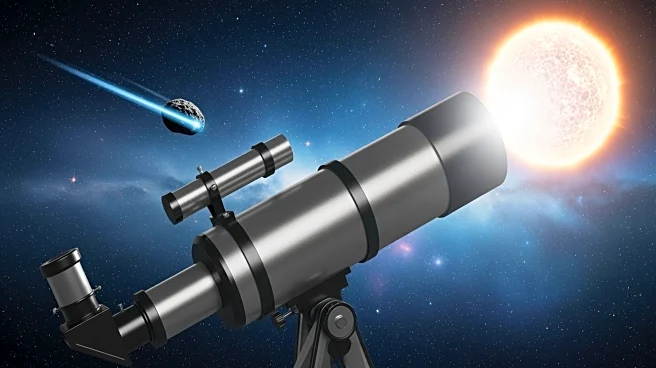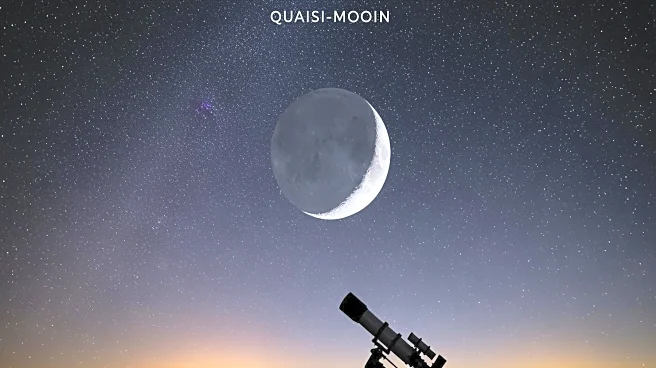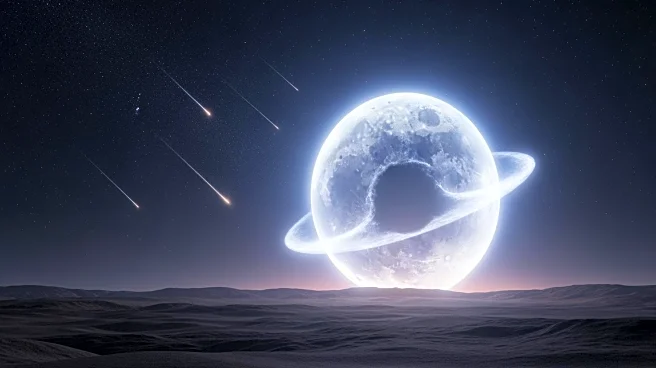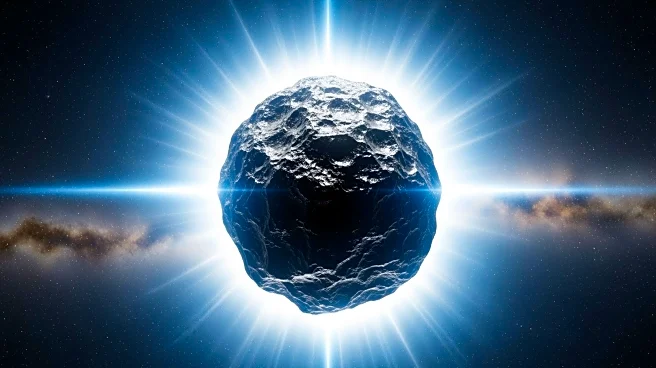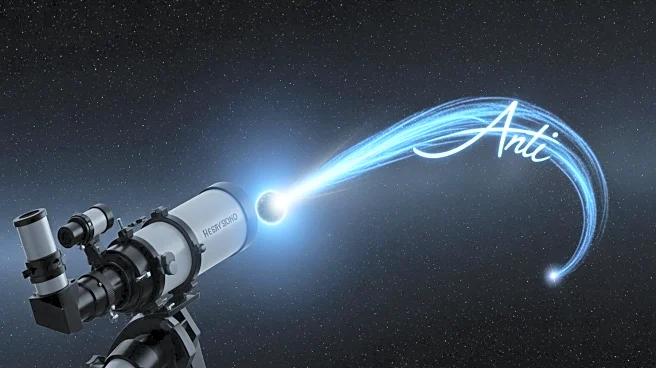What's Happening?
Astronomers have identified a quasi-moon named 2025 PN7, which has been orbiting the sun near Earth for approximately 60 years. This celestial object, discovered by the Pan-STARRS observatory in Hawaii,
is a near-Earth asteroid that follows a similar orbital path to Earth. Unlike temporary mini-moons, quasi-moons like 2025 PN7 do not pose an impact risk to Earth. The quasi-moon is estimated to be 98 feet wide and originates from the Arjuna asteroid belt, a group of small space rocks with Earth-like orbits. The discovery adds to the understanding of near-Earth objects and their potential impact on planetary exploration.
Why It's Important?
The discovery of 2025 PN7 is significant as it provides insights into the dynamics of near-Earth objects and their interactions with our planet. Quasi-moons offer unique opportunities for scientific study due to their prolonged presence near Earth, allowing researchers to gather data over extended periods. Understanding these objects can aid in developing strategies for planetary defense and exploration. Additionally, missions like China's Tianwen-2, which aims to collect samples from quasi-moons, could enhance knowledge about the solar system's evolution and the origins of these space rocks.
What's Next?
The quasi-moon 2025 PN7 is expected to remain in its current orbit for another 60 years before transitioning to a horseshoe orbit due to the sun's gravitational influence. This change will alter its proximity to Earth, providing further opportunities for observation and study. As interest in quasi-moons grows, future missions may focus on exploring these objects to uncover their composition and history. Such endeavors could lead to advancements in space exploration technologies and contribute to the broader understanding of the solar system.
Beyond the Headlines
The discovery of quasi-moons like 2025 PN7 highlights the complexity and dynamism of the solar system. These objects challenge traditional notions of celestial bodies and offer a glimpse into the intricate gravitational interactions that shape planetary orbits. The study of quasi-moons may also have implications for understanding the formation of moons and other natural satellites, potentially revealing new aspects of planetary science.
